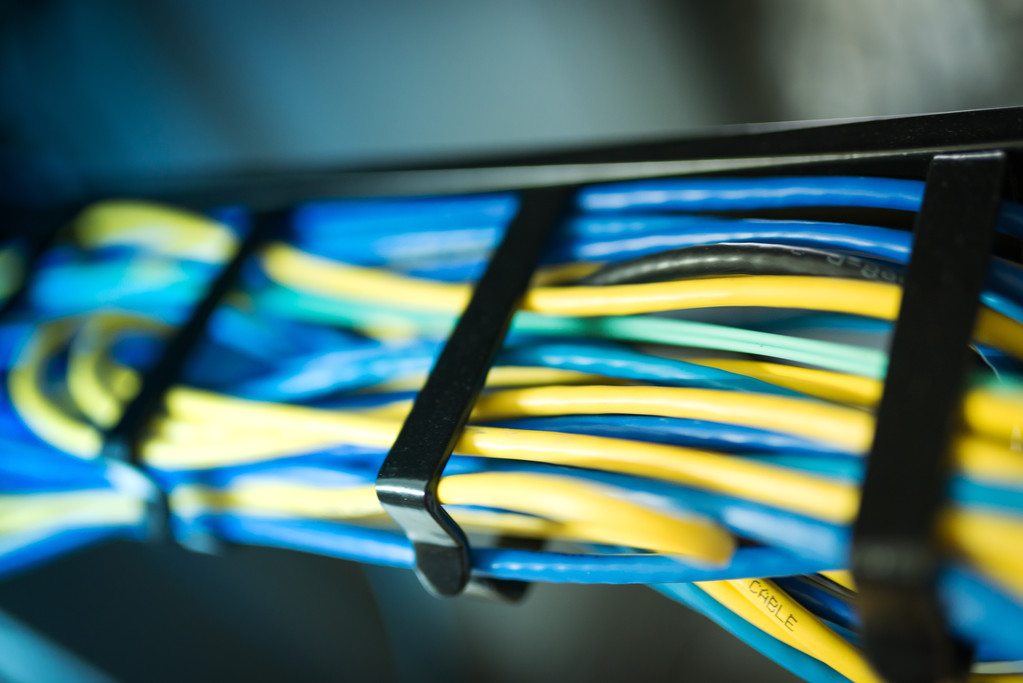Encyclopedia | What is structured cabling?

Encyclopedia | What is structured cabling?
What is structured cabling?
In short, it is a standardized cabling system mainly used in enterprise and educational networks. Structured cabling enables hardware to quickly and easily establish a reliable data network infrastructure, allowing users to access information from any point on the network.
It was originally intended to provide a reliable and simple way of networking local area networks (LANs), using communication protocols such as Ethernet, Token Ring, Fiber Distributed Data Interface (FDDI), and Asynchronous Transfer Mode (ATM) The standard transmits data over copper cables.

Advantages of structured cabling
Simplify managing multiple system complexities
It simplifies the complexities of managing multiple systems by building data, voice, and electrical networks all together. Due to its organizational structure, this makes troubleshooting easier and improves overall network performance. Additionally, the ability to pre-test cables and components in a structured environment ensures proper setup of any new equipment.
Provides scalability for any organization
This allows them to expand network capacity without running additional connections or rewiring the entire system.
Plus, the simplicity of using patch panels makes reconfiguring existing connections painless. This reduces time and money spent on installation costs and allows organizations to quickly modify their setup for faster, more efficient updates.
Minimize electromagnetic interference
Data cabling minimizes electromagnetic interference (EMI) from other devices on the network, which can cause problems with data communications. By ensuring that shielded cables are properly installed, businesses can ensure safe data transmission without any radio frequency interference. Finally, structured cabling systems are easier to maintain due to their organized framework, higher levels of flexibility when dealing with short-distance cabling installations.
Main Components of a Structured Cabling System
physical wiring
This is the actual wiring used to interconnect computers, servers, and other network equipment. It includes unshielded twisted pair (UTP) cables, fiber optic cables, coaxial cables, Cat5/6 cabling, and patch panels that distribute signals from one cable segment to another.
cable management
This refers to any system that organizes and routes cables through conduit or harnesses. It helps protect the wires from accidental damage or disconnection. A properly installed cable manager also makes troubleshooting a lot easier. This includes labels for quick identification of connections between components and cable racks, which can be used for cable routing without having to constantly untangle them.
network hardware
This includes network switches, routers, hubs, and bridges, which serve as the core connection points for all network devices in the system. The main purpose of these hardware components is to enable communication between different network nodes, i.e. computers connected to a local area network.
Test Equipment
This includes various types of specialized test equipment used to measure the performance of structured cabling systems. Tests such as insertion loss testing, attenuation testing, crosstalk testing, impedance measurements, and length measurements all help ensure proper installation of the cable network and its overall long-term performance.
A thorough understanding of the different components required for a structured cabling system allows organizations to ensure they have the necessary hardware to best meet their needs.
Types of structured cabling
Depending on the specific requirements of your environment, the type of cabling used may vary from setup to setup.
Copper cables have been around for centuries and are the most cost-effective way to transmit data over short distances. It is capable of sending large amounts of data quickly and reliably, even over long distances, but the data rate decreases with distance. This type of cabling requires more maintenance than fiber optic or wireless, and its maximum transmission distance is limited to less than 100 meters.
Optical fiber, which uses bundles of glass fibers to transmit data as pulses of light. This form of cable has the advantage of being able to transmit much greater distances than copper wire without signal attenuation. However, it is difficult to install and requires specialized equipment to connect each endpoint. Also, it can be expensive, making it less attractive compared to copper for some applications.
Finally, there is wireless technology that allows data to be transmitted over air waves rather than using physical cables. While this makes installation and maintenance simpler, its use may be limited by environmental factors such as signal strength, interference from other objects or signals, and line-of-sight propagation issues.
Also, wireless is not suitable for applications that require a high level of security because it is relatively easy to break into an indoor network due to its inherent limitations.
How does structured cabling benefit the business?
Structured cabling can benefit businesses in many ways. With a structured cabling system, businesses can ensure that their networks are properly designed and maintained for maximum performance and reliability. Structured cabling improves the ability to solve problems quickly because all cables and connections are organized in an efficient manner. It also increases uptime by reducing network maintenance time.
Additionally, structured cabling often saves businesses money in the long run because it is more cost-effective than traditional cabling systems that require frequent replacements and upgrades. In addition, structured cabling helps maintain the current IT infrastructure because all components are compatible with each other and network changes are easier and faster than with traditional designs.
Is structured cabling compatible with all types of network infrastructure?
Structured cabling is compatible with all types of network infrastructure. Structured cabling is a method that allows the seamless integration of various hardware and software components in different network infrastructures. It allows for consistency in how cables are routed and connected, while also creating flexibility for subsequent technology changes.
This means that even if the hardware or software used in the network switches over time, these changes can be made without modifying the cabling infrastructure itself. As long as standards are met and maintained, structured cabling should work with any type of network infrastructure.